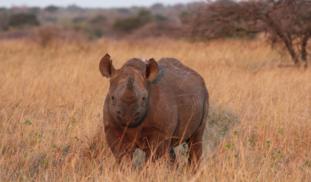Please wait...
About This Project
We are sequencing the genome of a beautiful black rhino. Her name is Ntombi, and she is one of only 5,055 black rhinos alive in the world. Three out of eight original subspecies have been poached to extinction and the remaining five subspecies are critically endangered. With Ntombi's genome sequence we will be able to advance scientists' understanding of this endangered species that has played a critical role in our ecosystem for over 50 million years.

Browse Other Projects on Experiment
Related Projects
Using eDNA to examine protected California species in streams at Hastings Reserve
Hastings Reserve is home to three streams that provide critical habitat for sensitive native species. Through...
City smart: Are cities making birds smarter?
One cannot go to Florida and miss the White Ibises roaming golf, park and private lawns. But how does a...
How do polar bears stay healthy on the world's worst diet?
Polar bears survive almost entirely on seal fat. Yet unlike humans who eat high-fat diets, polar bears never...





